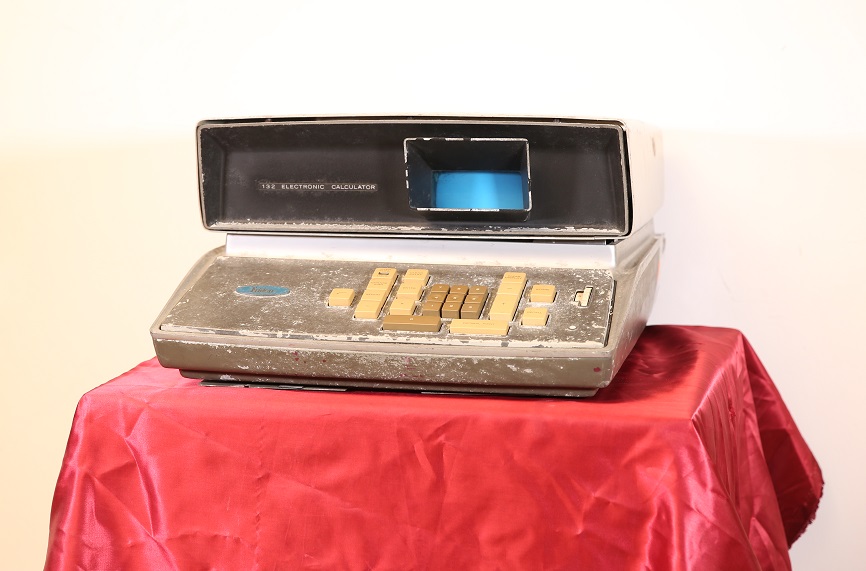- Developer: Robert Ragen
- Manufacturer: Friden Calculating Machine Company (Friden, Inc.)
- Released in: April 7, 1965.
Distinctive Features
- Ten-key electronic desktop calculator with square root.
- Uses a CRT (Cathode Ray Tube) to display the contents of the four registers.
Technical details
- Capabilities – 4 functions, memory, square root.
- Display – 4 lines of 12 characters each, using cathode ray tube
- Size – 460 mm x 600 mm x 260 mm (18″ x 24″ x 10″).
- Weight – 19 Kg (42 lbs).
- Technology – 8 boards with individual transistors (mainly 2N1304 (NPN) & 2N1305 (PNP) alloy-junction Germanium transistors, & 2N2635
- transistors) on 8 boards 290 mm x 170 mm (11.5″ x 7″), and delay line memory.
Description
The Friden 132 electronic calculator can be considered as the successor of the groundbreaking, successful Friden 130. According to the history, Friden EC-130 is the first commercially-available, solid-state desktop electronic calculator. The main difference between 132 and 130 electronic calculators are the added features of the 132 such as single-key automatic square root function, additional fixed decimal point settings, and a modification to the Reverse Polish Notation (RPN) stack logic which made the top register in the stack automatically duplicate itself into the 3rd register when the stack popped, providing an automatic constant feature. With those additional features the 132 calculator made more suitable for scientific applications where the square root or constant operations were frequently needed. Except the additional features, the overall architecture and design of 132 was fundamentally similar to the 130 implementation. In the latter part of 1965, Friden engineers realized that there is a possibility to make design changes by removing one of the four counters in the machine and simplify the logic. The Friden 132 calculators prior to serial number 3902 has utilized the original four-counter architecture which is similar to the Friden 130. Machines from serial number 3092 and beyond had done the change to the logic to eliminate the “B” counter, making the machines “three counter” architecture machines.

